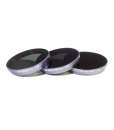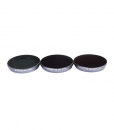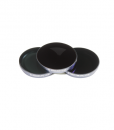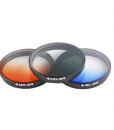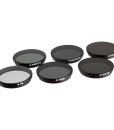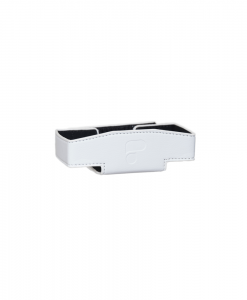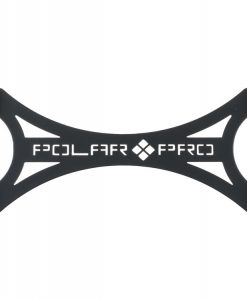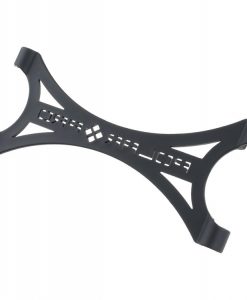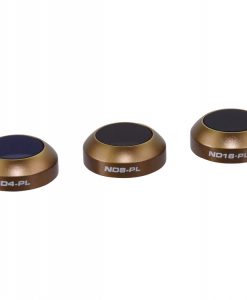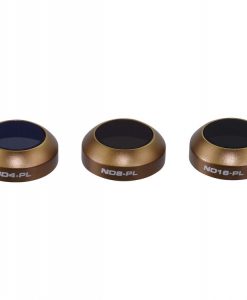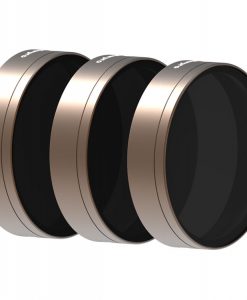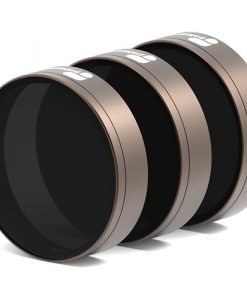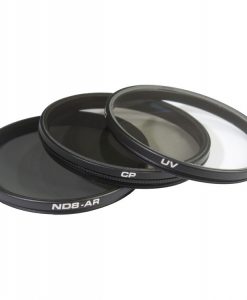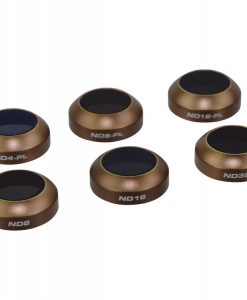Shop/Drones & Aerial Imaging/Filters for Drones
Polar Pro Inspire 1 / OSMO Filter Cinema Series 3-Pack
Product Highlights
- Limited edition fits: Inspire 1 (X3and Z3), and Osmo/Osmo+
- Includes ND8/PL, ND16/PL, ND32
- Multi-coated Cinema Series HD glass provides extremely sharp optics
- AirFrame™ construction for smooth and safe gimbal movement
- Gunmetal gray anodized frames
The PolarPro Inspire 1 / Osmo Cinema Series 3-Pack is for photographers who demand the best quality possible. This limited edition filter pack features our high definition multi-coated Cinema Series glass, which provides aerial photographers with the sharpest images possible. Using PolarPro’s AirFrame™ construction, these filters weigh a mere 6.64 grams (ND/CP) and 5.47 grams (ND) for smooth and safe gimbal operation. These Cinema Series filters are used in high-end and professional video production.
Included Filters:
5-Stop Neutral Density Filter (ND32) (5.47g): The ND32 filter is what we use on extremely bright days. This filter is designed to take down the Inspire 1’s shutter speed by 5 stops. This is a very dark filter so it should only be used where there is enough available light to reduce. We use this filter shooting in the desert or over snow on very bright days.
3-Stop Polarizer (ND8/PL) (6.64g): The ND8/PL is a versatile filter, which reduces the camera’s shutter speed by 3 stops while also providing polarization. Perfect for conditions that are too bright for the CP filter, the ND8/PL allows you to reduce the shutter speed 3 stops while also capturing beautifully saturated colors.
4-Stop Polarizer (ND16/PL) (6.64g): The ND16/PL provides 4 stops of shutter speed reduction while also providing polarization. This is our go-to filter for sunny days where we want to capture saturated colors and improve saturation.
The following guideline is a good starting point for when to use each filter while filming with your Inspire 1, Phantom 3, or Solo. The goal of this chart is to reduce the camera’s shutter speed to 1/60th to give aerial videos a smooth cinematic look, rather than a choppy high shutter speed look. A popular way of filming aerial video is to have your shutter speed at double the frame rate. So, if you are shooting 1080/60, then you want to try to achieve a 1/120th shutter speed. Or, if filming 4K/30 or 24, you will want to be near 1/60th shutter speed.


